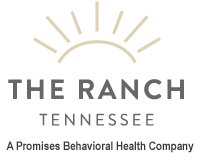PTSD, or post-traumatic stress disorder, can affect anyone who has experienced or witnessed a traumatic event, such as a car accident, natural disaster, physical or sexual assault, or military combat. While everyone may react differently to trauma, some symptoms are common among those with PTSD. Knowing what to watch out for with PTSD can lead to better outcomes and recovery.
At Promises Recovery Ranch, we understand how difficult it can be to reach out for help, and we want to make the process as comfortable as possible. Our admissions team is available 24/7 to answer any questions and support throughout the process. We accept most commercial insurance, and our self-pay rates are affordable.
If you or someone you love is struggling with PTSD or addiction, please get in touch with us. Our caring staff is ready to help you begin your journey to recovery. Call 1.844.876.7680 today to learn more about PTSD treatment and start healing.
What to Watch Out for with PTSD
While symptoms may not appear immediately, they can manifest in different ways. It is essential to know what to watch out for. Here are some of the common PTSD warning signs.
Re-Experiencing Symptoms
One common warning sign of PTSD is re-experiencing symptoms. This can include flashbacks or feeling like the traumatic event is happening again. People with PTSD may also have recurring nightmares or intrusive thoughts. They may avoid certain places, people, or situations that remind them of the trauma. For instance, a person in a car accident may avoid driving or riding in a car, or someone who has experienced sexual assault may avoid being in intimate situations.
Avoidance and Numbness
Another warning sign of PTSD is avoidance and numbness. People with PTSD may avoid discussing the trauma or anything related to it. They may also avoid social situations, hobbies, or activities they once enjoyed. Many people with PTSD feel emotionally numb, disconnected, or indifferent to things that once gave them pleasure or joy. Those with PTSD may also have difficulty experiencing positive emotions or have a persistent sense of emptiness or hopelessness.
Hyperarousal and Irritability
People with PTSD may also experience hyperarousal and irritability. They may feel constantly alert, on edge, or irritable. Individuals with PTSD often have a strong startle response or be easily startled. They may also have difficulty concentrating or sleeping or experience anger or aggression. Those with PTSD might also engage in risky or self-destructive behaviors, such as substance abuse or reckless driving.
How Promises Recovery Ranch Can Help
If you or a loved one experiences warning signs, seeking help from a licensed mental health professional is important. Promises Recovery Ranch offers a range of evidence-based programs and therapies for treating PTSD and co-occurring mental health conditions.
Our experienced and compassionate clinical staff uses a holistic and personalized approach to help clients heal from the inside out. We offer individual therapy, trauma-informed care, dialectical behavior therapy (DBT), cognitive-behavioral therapy (CBT), eye movement desensitization and reprocessing (EMDR), and other interventions to help people with PTSD find lasting relief.
Reclaim Your Life with PTSD Treatment at The Ranch
At Promises Recovery Ranch, we understand that each client has unique challenges and strengths. We work closely with individuals to develop a customized treatment plan that meets their physical, emotional, and spiritual needs. Our client-centric approach to treatment ensures clients receive the support and resources they need to achieve lasting recovery and wellness.
If you or a loved one is struggling with PTSD or other mental health conditions, don’t wait any longer to get the help you deserve. Contact The Ranch today at 1.844.876.7680 or online to learn more about our evidence-based programs and how we can help you or your loved one heal and thrive.




